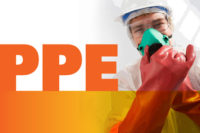An effective risk assessment will reveal the need for eye and face protection. Safety eyewear is selected on the identified hazard (flying debris/particulates, fine powders/mists, liquid splashing, infrared or U-V light) followed by the appropriate type (wrap-around glasses or side shields, vented or unvented goggles, filtered lenses) of frame and lens.
Safety eyewear must meet certain requirements (ANSI Z87.1 standard in the US, Canada’s CA/CSA Z94.3, the European CE EN166 Australia/New Zealand’s AS/NZS 1337), which address the type of eyewear needed to meet the hazard. Eyewear type, however, is not the only consideration to make in the selection process. Lens color offers additional protection, based on risk assessment findings.
Studies show employees will not wear eye protection unless it is comfortable, fits properly, or functions well. Lens color can impact employee protection and performance levels and provide a better choice.
Lens color is not the same as a filtered lens. Filters protect wearers from excessively bright or harmful rays of light, as when grinding metal, welding, and working around lasers. Lens color does not “filter” harmful light rays, but it can reduce eye strain and enhance lighting for improved comfort and function.
Lens color
If lens color is misunderstood, it can become a “flavor of the month” when employees want the lens simply because of how it looks. This can become expensive for an employer when learning that once the eyewear is issued, employees stop wearing it because it doesn’t allow them to see properly.
Lens color must be part of an employer’s risk assessment findings. Employees can participate in the selection process by sampling the eyewear, but the color selection is a management decision.
There are primarily six lens colors to evaluate when selecting safety eyewear. These colors are clear, smoke, amber, indoor/outdoor, brown, and color mirrored. Additional lens designs may include anti-fog and scratch-resistant coatings and polarized lenses. Safety eyewear can also include protecting the wearer from ultra-violet (UV-A, -B) light rays.
Here are the most common lens colors and their appropriate uses.
Clear
A clear lens is for “normal” light conditions, whether indoors or outdoors. It provides protection in a properly illuminated work area or outside when bright glare or environmental conditions like snow are not factors.
A clear lens also allows the wearer’s pupils to be visible to others. This can be helpful in personal communications with others and ensuring an employee’s eyes are not under the influence of alcohol, a prohibitive substance, or prescription medication that may impact their safety and work performance.
Smoke
A smoke color lens is ideal for outdoor work in sunny environments or areas with glare. This will reduce eye strain on the wearer, providing a level of comfort that a clear lens cannot provide in that bright environment.
A smoke lens would not be appropriate when most of the work is indoors. It is appropriate for outdoor use, such as construction or operating outdoor mobile equipment. Also consider when the wearer comes inside, it may take an adjustment period for the wearer’s eyes to adjust to the indoor lighting.
Amber
An amber lens is suggested when working in low-light conditions – areas with limited illumination, dawn or dusk outdoor activity, outdoor night work, or night driving. The lens attracts light rays for better contrast in low-light conditions and enhances shapes and shadows that otherwise may be missed with a clear or smoke lens.
Indoor/Outdoor
This lens is preferred with frequent changes in light conditions, like forklift operators transporting loads between the inside and outside. The lens is clear with a light outer-mirror coating that reduces eye strain. This choice reduces the need for issuing two sets of glasses and offers better efficiency in work.
Brown
Worn on bright sunny days or in areas with significant glare, such as in snow or water, these lenses are popular with workers on boats, ski patrols, or where maximum glare reduction is required.
Mirrored
Mirrored lenses have an external coating that reflect light over a smoke lens to significantly reduce eye strain from natural light and glare. The coating can be dark, blue, or red and work well for military, construction, or outdoor mobile equipment and truck operators.
Mirrored lenses should not be selected if most of the employee’s time is spent indoors or in low-light conditions as it will create additional hazards by reducing light.
Lens color is Integral
Julie Trottier, Vice President of Global Commercial Marketing for Mechanix Wear®, a PPE manufacturer that offers lens colors with patented designs, states that, “Many people select lens color as an option, based on what looks fashionable or just to have something different.” For Mechanix Wear®, Trottier explains that “the right choice optimizes worker performance based on the task and environment, so lens color is an integral part of the safety eyewear selection process.”
To determine lens color in the eyewear selection process, do your research and update your risk assessment to identify the hazards and what lens color selection will reduce those hazards for your employees. Reach out to your distributor or manufacturer representative for assistance, if needed.
Summary
Safety eyewear must fit well, feel comfortable, and function based on the identified hazard. Lens color is a selection choice that can add to a person’s protection level and comfort, based on the wearer’s assigned tasks.


